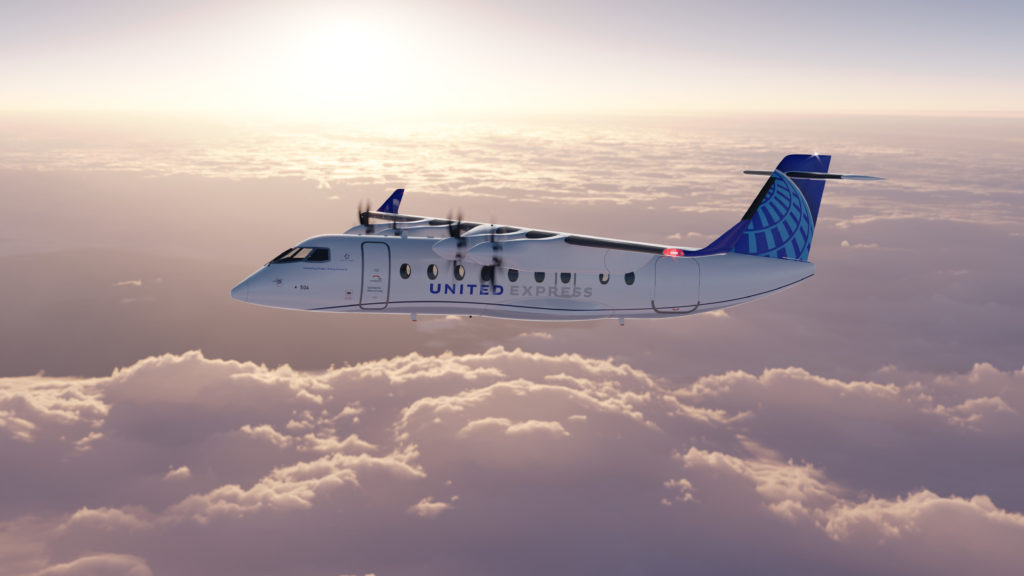Estimated reading time 6 minutes, 59 seconds.
Sustainability initiatives of substance in the aviation industry (that are more than simply greenwashing) are like four-leaf clovers — rare, yet highly sought after, as passengers become more environmentally conscious. One example of an emerging “environmentally-friendly” technology to make the industry more sustainable is electric aircraft. While some hope these aircraft will solve the industry’s growing emissions problem, others question the criteria deeming this technology sustainable. After all, these aircraft draw from grid electricity and generate additional batteries that could eventually pollute the Earth. And a handful of people question whether electric aircraft are practically feasible.

A Swedish aircraft manufacturer, Heart Aerospace, is developing a 19-seat electric aircraft, the ES-19, in response to these questions. The ES-19 has the potential to become one of the four-leaf clovers that the industry desperately needs to clean up its foul image as an environmentally damaging operation.
Aviation sustainability leaders have already recognized the potential of the ES-19. For example, United Airlines placed an order for 100 of the type to enter into service in 2026. After Transport Canada certification is achieved, Canadian airlines will also have the opportunity to demonstrate their commitment to sustainability by embracing this technology.
Appropriate Electric Aircraft Routes
Unlike conventional fossil fuel-powered aircraft that guzzle gas, the weight of an electric aircraft battery does not diminish during flight. This restricts the total range, hampering an electric aircraft’s ability to penetrate the long-haul travel market. As a result, the ES-19 is well suited for select regional routes up to 400 kilometers (250 miles). As battery densities improve, the aircraft will progress to cover short-haul routes up to 1,300 km (810 mi). Since the aircraft is designed to accommodate this extra battery weight, the passenger experience – such as baggage weight – will not be compromised.
When examined through an environmental lens, electric aircraft designed with existing battery technologies could combat the four percent of global aviation emissions caused by flights under 200 km (125 mi) and the 9 percent from flights shorter than 400 km (250 mi) by the end of this decade. As battery densities improve, the 33 percent of total aviation emissions caused by flights under 1,300 km could be eliminated.
The ES-19 also strengthens an airline’s social pillar of sustainability by connecting passengers from more conveniently located smaller airports (perhaps stimulating the local economy in the process) – with the potential to replace vehicle routes with environmentally-friendly air travel. So, it is unsurprising that the ES-19 is designed for short take offs and landings with steep approach capabilities, operating from runways with a minimum length of 750 meters (2,460 feet).
Finally, the financial benefits of the ES-19 are remarkable; short-haul flights conducted by this electric aircraft with fewer passenger seats are profitable, compared to the historically used turboprop aircraft with a similar seating capacity popular in the 1980s — as well as the currently embraced turboprops with approximately 70 seats. According to Heart Aerospace, “our electric motor is about 20 times less expensive than a similarly-sized turboprop, and about 100 times less expensive than the cheapest turbofan. More importantly, maintenance costs are more than 100 times lower. These lower operating costs will make 19-seater electric aircraft competitive to 70-seater turboprop aircraft.”
Battery developments will also continue to minimize costs; in 2019, the average price was $156 per kilowatt hour and is expected to decrease further to $61/kWh by 2030.
What About the Grid Electricity and Batteries?
For an electric aircraft to be deemed sustainable, grid electricity must be affordable and generated by renewable energy sources. For example, over 90 percent of grid electricity generated in Sweden comes from renewable sources, making quick turnarounds possible after less than a 40-minute charging period with a charging power of 1MW per aircraft. This rapid charging cycle eliminates the need for battery swaps. Instead, efforts should focus on acquiring new airport infrastructure, including chargers (which could double as chargers for service and transportation vehicles) at a price of approximately $500,000 per unit.
Batteries are assumed to have a 1,000-charge cycle, but the type of route serviced could prolong the lifespan to 3,000 cycles. In other words, battery replacement will be at least an annual procedure if the ES-19 flies 10 legs daily. What happens to the replaced batteries? Heart Aerospace proudly highlights second-life applications on the ground, including serving as airport grid electricity storage units. Thereafter, planned end-of-life disposal ensures a 50 percent recycling or material reuse rate.
The Future of Short-Haul Travel is Electric
Heart Aerospace is undoubtedly on track to improve short-haul air travel according to all three pillars of sustainability: people, planet, and profits. Airlines that embrace this technology as it enters service from 2026 will add depth to their sustainability strategies while doing their part to prevent looming existential threats like climate change.
Perhaps the ES-19, and other electric aircraft under development, will serve as a lucky four-leaf clover to help make aviation greener. Hopefully, this will win back the hearts of environmentally-conscious passengers who can then travel freely with peace of mind – knowing that they are flying responsibly instead of succumbing to greenwashing. And environmentally-conscious aviation enthusiasts, like me, will be able to proudly and publicly announce that we ‘Heart Aerospace.’
Thanks for this – it gets hard to have hope sometimes.. The idea of never seeing family and friends in other parts of the world is just tragic but I can’t, in good conscience, fly long haul anymore..
Would flying wing designs allow more passengers to fly electric?
I’d think hydrogen will be the better choice in the future.